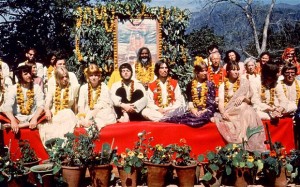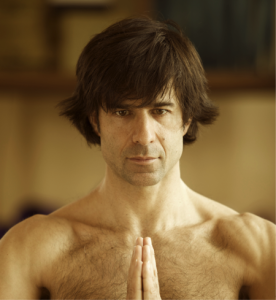In 1968 Herbert Benson was doing blood pressure experiments with monkeys at Harvard. 1968 was also the year that the Beatles visited a meditation guru called the Maharishi Yogi in India. Eastern spirituality suddenly became very trendy, and some of the Maharishi’s meditators visited Benson. Initially Benson sent them away because he thought they were a bit nuts. They persisted and eventually Benson agreed, but with one condition: the Maharishi Yogi himself had to participate. The Maharishi agreed because he was sure meditation worked, and wanted to use Benson and Harvard to put meditation on scientific grounds. Benson, on the other hand, was sure meditation did not work and looked forward to exposing the Maharishi as a charlatan.
“Don’t worry about the future. Or worry, but know that worrying is as effective as trying to solve an algebra equation by chewing bubble gum. – Mary Schmich

They set up the experiment by connecting meditators to equipment that measured their heart rates, blood pressure, and brain activity. When the results came out, Benson was surprised: the meditators were able to lower heart rates, reduce oxygen consumption, decrease metabolism, and reduce blood acidity. Subsequent systematic review evidence, have found that meditation (and similar techniques) can help treat anxiety, general psychological health and pain management of cancer patients, cognitive decline, high blood pressure, multiple sclerosis, childbirth outcomes, schizophrenia, and post-traumatic stress disorder (PTSD). Other studies suggest that relaxation can help treat disorders ranging from bronchial asthma to binge eating and sleeping problems. All this without drugs or drug side effects. The relaxation response is the antidote to the harmful stress response. Whereas chronic stress – an all too common condition – is bad for you (read my blog), the relaxation response rebalances your body, and creates optimal conditions for inner healing.
Benson wanted to share the good news about meditation with the world but was concerned that his colleagues might think he was a quack so he gave the process a scientific name: the relaxation response. This wasn’t a bad idea because the Maharishi’s meditation style wasn’t the only game in town: other types of meditation, traditional Yoga, and even some kinds of prayer all have similar health benefits.
You could follow in the Beatles’ footsteps and visit an Ashram in India to learn relaxation, but you don’t have to. A beautiful thing about the relaxation response is that it quite easy to induce it. All you really need is about 15 minutes, and a quiet space where it is safe to close your eyes. You can try following my guided relaxation here. Kick your feet up and give it a try.

About the author: Jeremy Howick is the author of a forthcoming book about the science behind the body’s amazing ability to heal itself.
Disclaimers: Jeremy Howick hopes you become happier and healthier as a result of what he writes and says, so please don’t do anything silly. This information is not intended to replace the advice of a doctor and is intended for enjoyment purposes only. Jeremy Howick disclaims any liability, including any implied warranties or other obligations at law, for the decisions you make based on this information. The views he expresses in this newsletter and elsewhere are the personal views of Dr. Jeremy Howick and are not in any way related to the views of the University of Oxford. To the extent you wish to reproduce any of the information set out above in a product, publication or other service offering, you may not do so without the express written permission of Jeremy Howick. All material in this newsletter is subject to copyright © laws.
